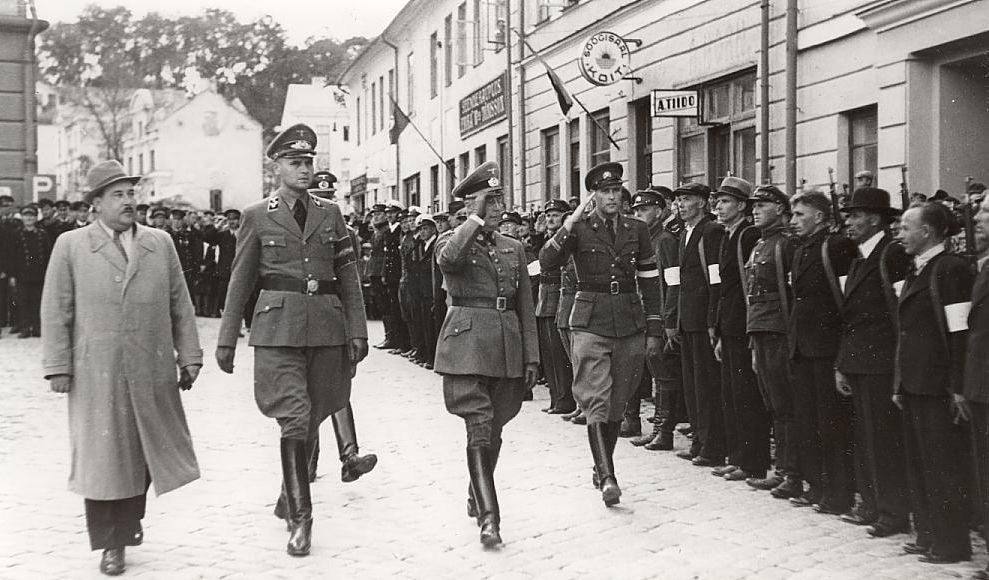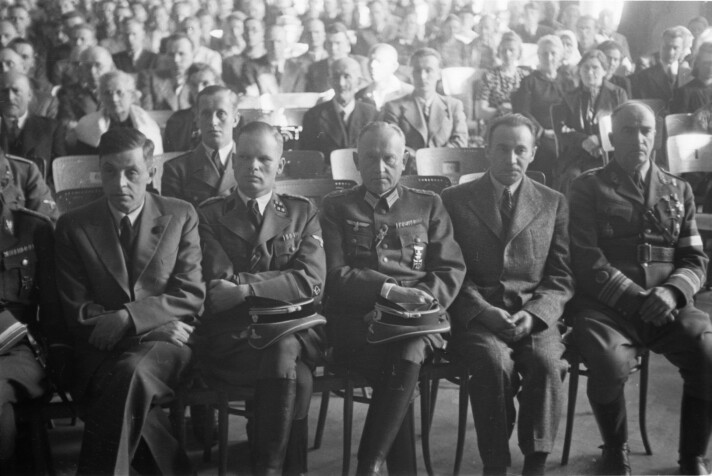Soviet Union and Germany were allies during the first years of the Second World War. As a result of their secret agreement, Estonia and the other Baltic states were occupied by the USSR in the summer of 1940. The Republic of Estonia was de facto abolished and the Estonian people were left to face communist terror. Germany’s attack on the USSR on 22 June 1941 ended their alliance. In two weeks, the first German units reached the Estonian borders. Wehrmacht’s success and the Red Army’s panicked retreat created the necessary conditions for an outbreak of an armed resistance movement against the occupying Soviet regime. In the circumstances of an interregnum, an attempt was made to restore Estonian power structures. People greeted the arriving German units as liberators, as they were hoping that Germany will support the restoration of Estonia’s nationhood.

Hitler’s policies did not foresee the restoration of conquered countries’ independence. The political and racial enemies of his regime were destroyed, confied to concentration camps or sent to forced labour camps. In Estonia, more than 20,000 Estonian citizens and residents fell victim to repressions. More than 8000 of them were murdered, including nearly 1000 Estonian Jews and more than 300 Roma. During the occupation, approximately 12,500 Jews were brought to Estonia from Germany and German-occupied countries. After the end of the German occupation, approximately 100 of them were alive in Estonia. 7500–7800 Jews were murdered or died in camps in Estonia, the rest were taken out of Estonia before the German forces’ retreat. Several major POW camps were located on Estonia’s territory, where tens of thousands Red Army soldiers were held captive. The number of Red Army soldiers that died in POW camps in Estonia is estimated at 15,000.

The German occupying regime in Estonia was forced to make minor political compromises due to the failure of the blitzkrieg. In order to ensure the support of the public, the occupying regime encouraged hope for the achievement of post-war independence or autonomy and refrained from mass violence against Estonians. Estonia was also of military and strategic importance as the rear area of the Nord group that had been stalled near Leningrad. The Estonians did not see a realistic alternative to German occupation in light of the danger of the return of the Red Army and Soviet regime, and therefore armed resistance movement to the German occupation did not emerge.
As the German forces began their retreat in September 1944, Jüri Uluots, the last Prime Minister of the Republic of Estonia in the duties of the President, appointed a new government. However, it was unable to restore the national independence of Estonia. The Red Army conquered Estonia in autumn 1944 and Soviet terror continued with renewed impetus.